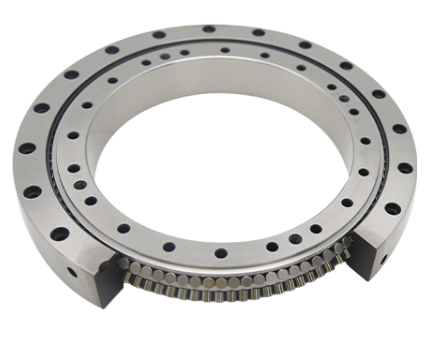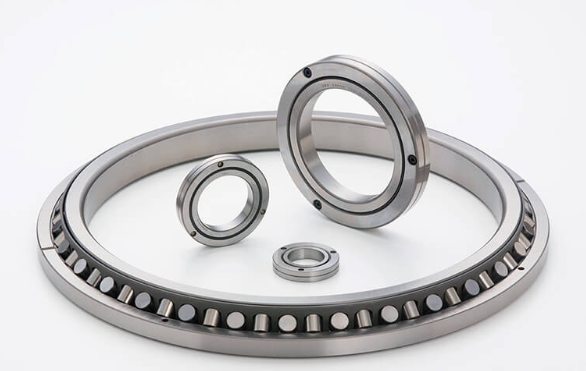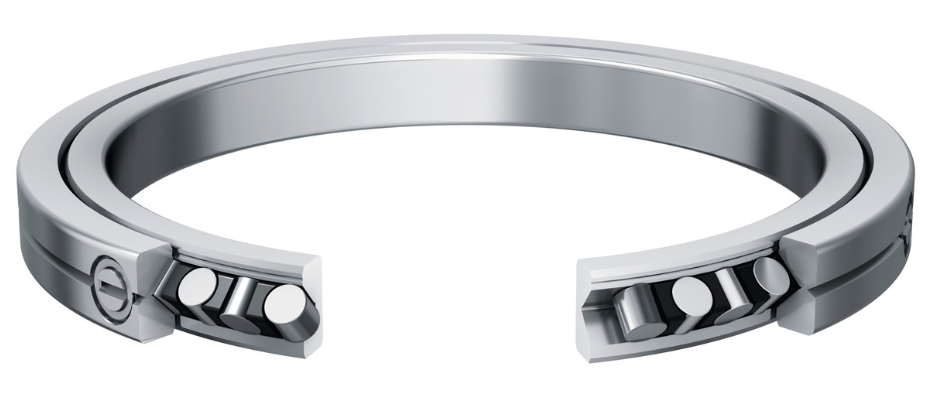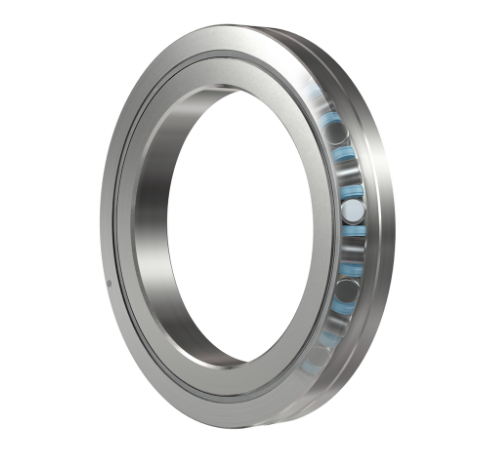Newsroom
How to Prevent Slippage in Precision Crossed Roller Bearings
2025-02-03Slippage in precision crossed roller bearings can cause surface damage, which is a common failure mode. But what exactly is bearing slippage? Why does it occur, and how can it be prevented?

1.What Is Precision Crossed Roller Bearing Slippage?
When a precision crossed roller bearing operates, the rollers should perform pure rolling motion on the inner and outer raceways. If the force driving the roller cage is sufficient to overcome resistance, slippage can be avoided. However, if the driving force is insufficient, some degree of sliding will occur in addition to rolling. This difference in speed relative to the inner or outer ring is referred to as slippage.

2.Factors Leading to Slippage and Surface Damage
I. Slippage is a necessary condition for surface damage, but it does not always result in it. Factors such as shaft vibration and alternating loads can generate forces that tear the lubrication film, leading to localized surface damage.
II. Alternating loads and lubrication film failure are closely related to slippage-induced damage. In severe cases, excessive frictional heat generated between the rollers and the inner ring can cause the inner ring to expand, reducing radial clearance and potentially seizing the bearing.

3.How to Prevent Precision Crossed Roller Bearing Slippage
I. Reduce the Number and Diameter of Rollers.
Since the rollers are driven by the rotating rings, reducing their weight helps minimize inertial resistance. This is a simple yet effective way to prevent and reduce slippage. In aerospace turbine engines, where external loads are relatively low, contact fatigue is no longer the primary failure mode of rollers. Studies suggest that reducing the number of rollers by 50% and decreasing their diameter by 25% does not significantly affect their contact fatigue life.
II.Optimize the Bearing Structure and Reduce Cage Weight.
In addition to minimizing the cage's weight while maintaining strength, its inherent characteristics should also be considered. For instance, resonance and rotational resistance at high speeds should be avoided. The guiding method of the cage is also crucial in high-speed bearings. If cage imbalance is well controlled, switching from outer-ring guidance to inner-ring guidance can effectively reduce slippage. This is because, in outer-ring guidance, the relative motion between the cage and the guiding surface creates a viscous resistance in the lubricating film, whereas in inner-ring guidance, the viscous force acts as a driving force for the cage. This difference significantly impacts slippage.
III. Implement Under-Ring Lubrication.
Under-ring lubrication helps dissipate heat generated by the bearing while minimizing additional losses caused by oil agitation. Additionally, modifying the bearing structure—such as switching from an outer-ring shoulder design to an inner-ring shoulder design—can further reduce oil agitation resistance.
IV .Use Hollow Rollers with Preload.
Preloaded hollow rollers can apply uniform preload across all rollers, eliminating slippage in all areas. However, since turbine engine rotor bearings operate across a wide range of speeds and temperatures, selecting the appropriate preload is critical. Excessive preload, even under low external loads, can lead to premature roller failure, often in the form of bending fatigue.

For more information, feel free to contact QIBR


